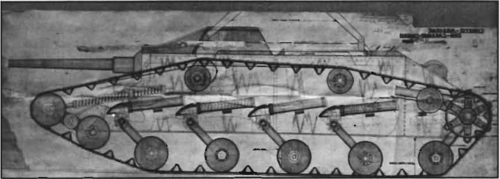CaptianNemo2001
ACCESS: Restricted
- Joined
- 27 March 2020
- Messages
- 19
- Reaction score
- 17
I have an airborne tank on file with louvers at the rear for 1942. USA.
But my problem is I need a radial air cooled engine that will fit in a space no wider then 37.5 inches in dia.
The louvers up on the rear deck, side on, are aprox 17 inches long. But there is a lot of space (hull length) for a radial or even a duplex.
I have looked at the T-1020 and thats too big... but haven't found the W-670/R-950 diameter yet.
As much as I love engines, I keep getting the feeling lately that if I want X... I really should just write the book.
Most of the engine books out there list things like HP or bore/stroke and tend to ignore the LWH.
Been looking for anything circa 1932 through 1942 that could be found in the US.
Sadly my engine books are all in boxes atm.
If you guys have any ideas... I'd love to hear them.
But my problem is I need a radial air cooled engine that will fit in a space no wider then 37.5 inches in dia.
The louvers up on the rear deck, side on, are aprox 17 inches long. But there is a lot of space (hull length) for a radial or even a duplex.
I have looked at the T-1020 and thats too big... but haven't found the W-670/R-950 diameter yet.
As much as I love engines, I keep getting the feeling lately that if I want X... I really should just write the book.
Most of the engine books out there list things like HP or bore/stroke and tend to ignore the LWH.
Been looking for anything circa 1932 through 1942 that could be found in the US.
Sadly my engine books are all in boxes atm.
If you guys have any ideas... I'd love to hear them.
Last edited:

